The All-Rounder, as its name indicates, is classified as an all-round, general purpose SUP. It is beamy to give it stability, and has a flat bottom with a horizontal bow to ride over the water as opposed to the vertical bow of a touring or racing board designed to cut through it. The sides, rather than being single vertical panels, have a bit of flare at the bottom and a bevel at the top that keep the All-Rounder from having a boxy appearance. There may be some practical benefits as well. The two obtuse angles should be less prone to wear than a single right angle between top and side and a little kinder to the paddler who might fall on it. It adds an extra seam to be stitched, filled, and sanded, but I think it’s a nice touch well worth the effort.
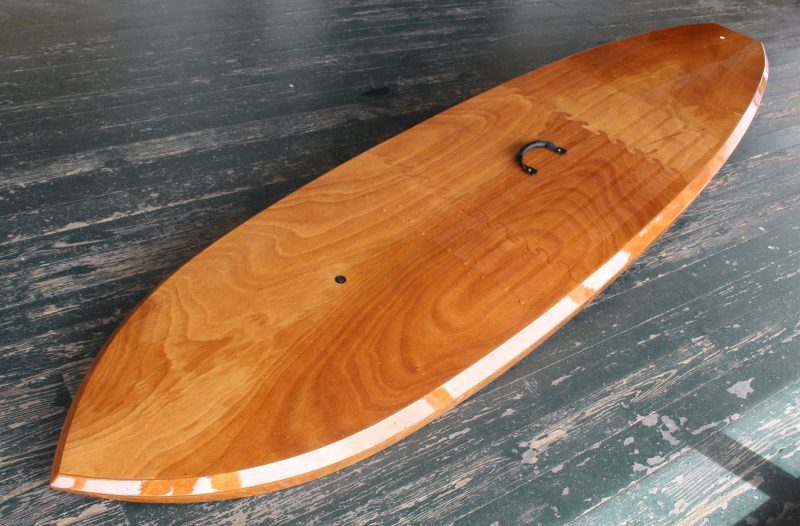 Christopher Cunningham
Christopher CunninghamThe beveled side, a carry-over from some of Pygmy’s kayaks, gives the All-Rounder a distinctive look.
The top of the board has three fittings: an attachment point aft for a leash, a rubber-and-webbing handle in the middle, and a vent forward to equalize air pressure when the board is not in use or when in transit through changes in elevation. The deck also has some discrete, transparent, textured strips for traction.
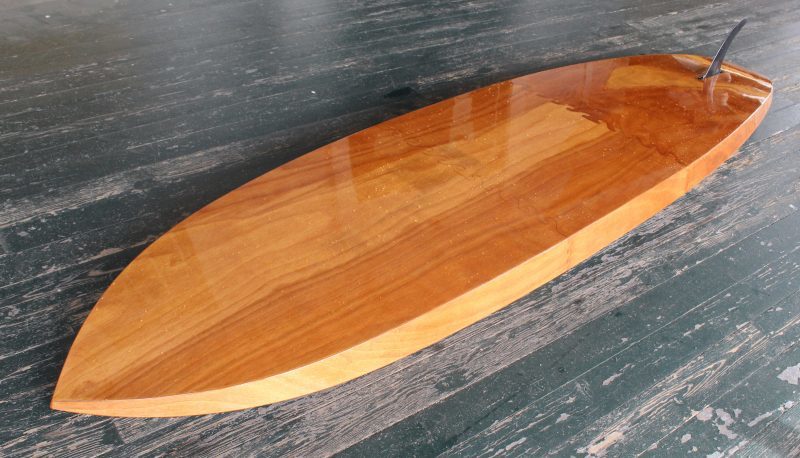 Christopher Cunningham
Christopher CunninghamThe forward and middle sections of the bottom are cut from the same piece of plywood, so the grain and color runs through the forward puzzle joint.
The 11′ board has a single 10″ fin set in a glass-filled nylon fin box built into the bottom. The box is longer than the top of the fin, offering the option to adjust the fin forward for better maneuverability or aft for stiffer tracking. The glass-filled nylon fin is removable, easily replaced if damaged, and offers more convenient storage of the board, advantages over a permanently attached fin.
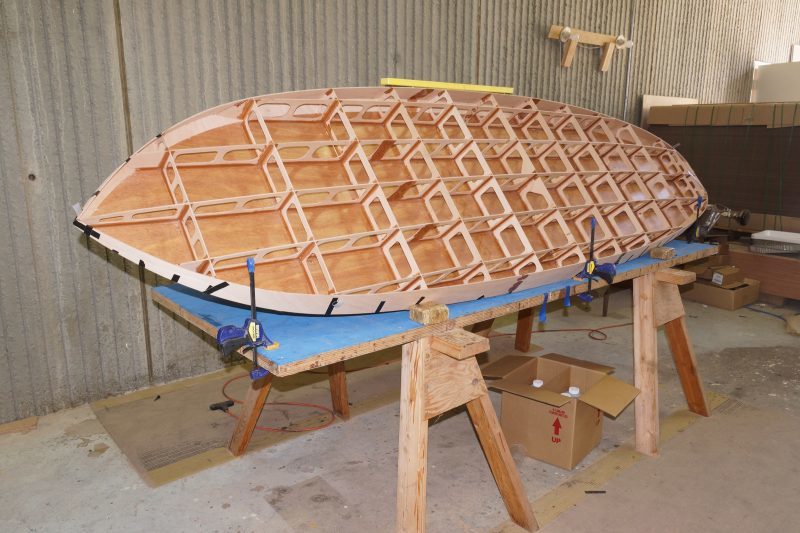 courtesy of Pygmy Boats
courtesy of Pygmy BoatsThe interlocking framework gives the board stiffness without making it heavy.
Pygmy’s kit comes with 26 pieces that make up the lattice internal framework and 19 panels that form the hull and deck. All of the parts are cut from 3-mm okoume BS-1088 plywood. The longitudinal pieces have wave-like puzzle joints for easy and precise assembly. The puzzle joints for the exterior panels vary in size—small on the sides, large on the top and bottom—and are aligned with each other, making an attractive pattern around the board.
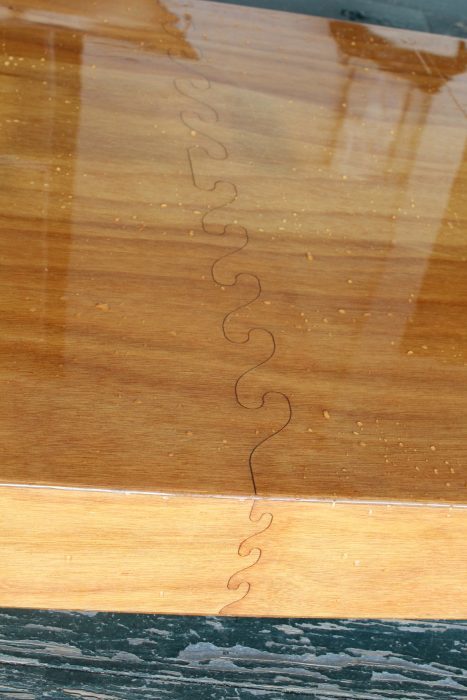 Christopher Cunningham
Christopher CunninghamThe puzzle joints are used to align the top, bottom, and side panels.
The aft 7′ of the deck is flat and the assembled lattice framework is fit and epoxied to the ‘glassed underside of that portion of the deck first, using a piece of plywood as a work surface. The forward end of the framework is epoxied to the deck in a second operation where the deck is elevated to its designed profile curve using some graduated lifts. The top and bottom side panels and the tail block follow.
The joining of the panel edges is not done with copper wire laced through pairs of holes in adjacent panels as they are in the stitch-and-glue construction of Pygmy’s kayaks. The edges are instead held together with strips of Gorilla tape, spot-glued with a thick superglue (cyanoacrylate), and ultimately bonded with epoxy/wood flour fillets. The bottom panel goes on last, set on a thick mixture of epoxy and wood flour applied to the edges of the framework. While the underside of the deck is fiberglassed, the interior surface of the bottom is not, and neither it nor the framework are coated with epoxy, thus minimizing weight and expense.
The exterior seams are filled with beads of a slightly thinner mix of epoxy and wood flour that get shaped when cured with a sharp file. Fiberglassing the entire exterior and installing the hardware follow. Sanding and varnishing complete the board, which tips the scale around 35 lbs.
The board’s light weight made it easy to lift and the handgrip attached at its center of gravity made it easy to carry. I liked this secure, comfortable handhold that I could wrap my fingers around over the finger slots I’ve used on other boards. The board could have used a patch of foam around the handgrip to ease the pressure of my knuckles against the deck. The handgrip didn’t get underfoot and trip me up with the paddling I did, but if you decide to take the board surfing, where a lot of fancy footwork is required, or do yoga on it, a recessed slot would be a better way to go. It wouldn’t be too difficult to create one in wood or add a commercially made one while building the board.
 Christopher Cunningham
Christopher CunninghamFloating without a paddler aboard, the rocker of the bottom is evident.
When I got aboard the All-Rounder it felt quite solid—I didn’t feel any give in the deck underfoot—and I liked its solid stability. I don’t get out paddling SUPs often, and while my balance is pretty good in a skinny, tiddly kayak, the skill doesn’t transfer well to standing up on a SUP board. The high stability will be a comfort as well to novices, SUP anglers, and yoga practitioners.
The board’s thickness maintains its stability for paddlers like me who weigh over 200 lbs. The chine between the side panels was right at the water’s edge with me aboard, so even when I had my weight to one side the board still felt stable. If the board were thinner and water washed over the deck when my weight was shifted to the side it would have been a different story.
I had no trouble walking and hopping back and forth on the All-Rounder to change my position. The board I paddled had non-slip strips in the middle, not all the way to the tail, so I didn’t shift my weight as far aft as I should have to get the bow up out of the water for sharp turns. The board was easily maneuvered even so and with the good stability I was comfortable doing cross-bow strokes for quick, tight turns.
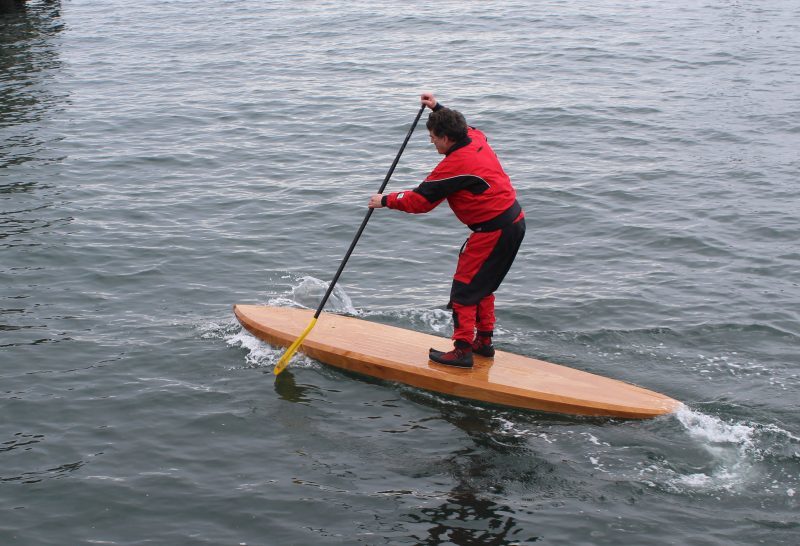 Christopher Cunningham/John Lockwood
Christopher Cunningham/John LockwoodWith my weight shifted to my right and the full width of the board’s left side showing, the deck is still dry and the stability still firm.
The single skeg was effective when I got some speed up. The first few strokes pushed the bow away from the side I was paddling on, but once I had some water moving past the skeg I would do seven to ten strokes on one side before switching to hold my course. In the still water of the marina, my GPS indicated I was doing 2 1/2 knots at an exercise pace, and 3 1/2 knots in a sprint.
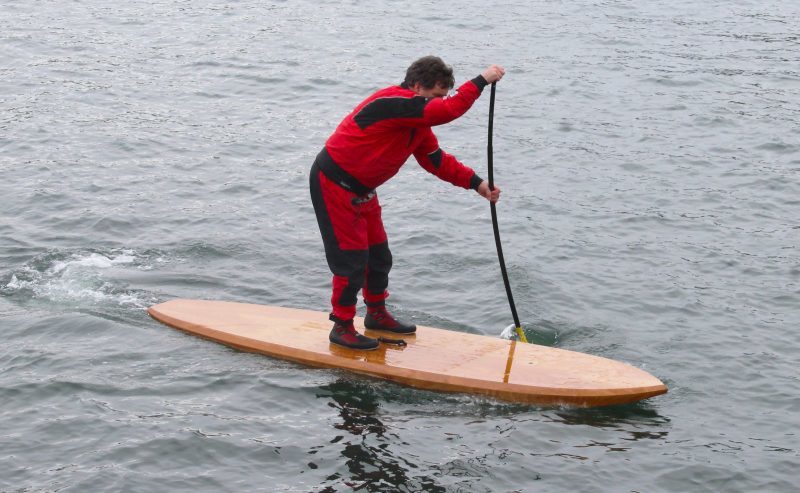 Christopher Cunningham/John Lockwood
Christopher Cunningham/John LockwoodThe All-Rounder is not designed for speed, but it will provide a good workout.
Outside of the marina the waves were small, less than 1′, and the only wake I had was from a distant ferry, so I didn’t have much to play with, but the board behaved itself in the waves I had. Riding the ferry wake, I was able to race ahead and plow the bow underwater in the back of one wave without any loss of control or stability. I never fell off the board unintentionally, but I did hop off several times and had no trouble scrambling back aboard and getting back on my feet.
The All-Rounder earns its name and should serve a wide range of SUP paddlers, especially new ones and large ones, and perform well in a wide variety of uses. If paddling with a dog or a child, fishing, yoga, exercise, or even napping is your thing, this new offering from Pygmy might be just the ticket.![]()
Christopher Cunningham is the editor of Small Boats Monthly.
All-Rounder SUP Particulars
[table]
Length/11′
Beam/34.25″
Depth/5.25″
Weight/35.5 lbs
Volume/249 liters
[/table]

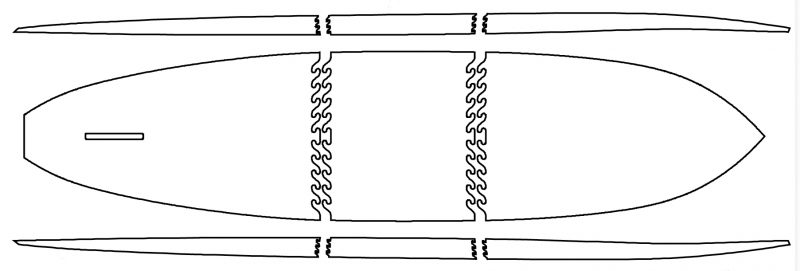
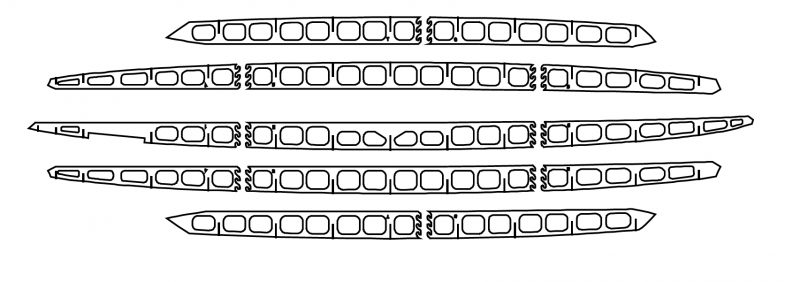

Kits for the All-Rounder SUP are available from Pygmy Boats for $1149.
Is there a boat you’d like to know more about? Have you built one that you think other Small Boats Monthly readers would enjoy? Please email us!

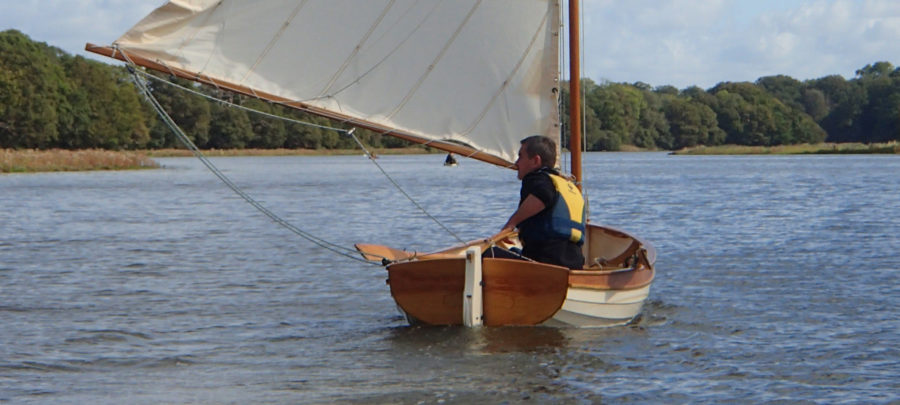
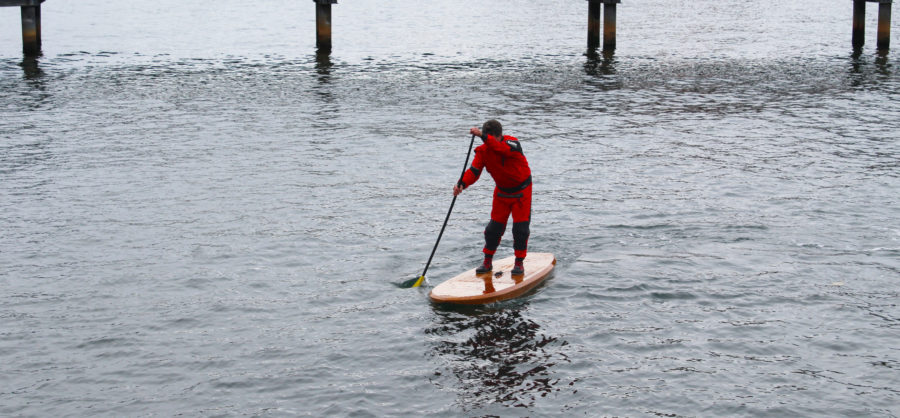

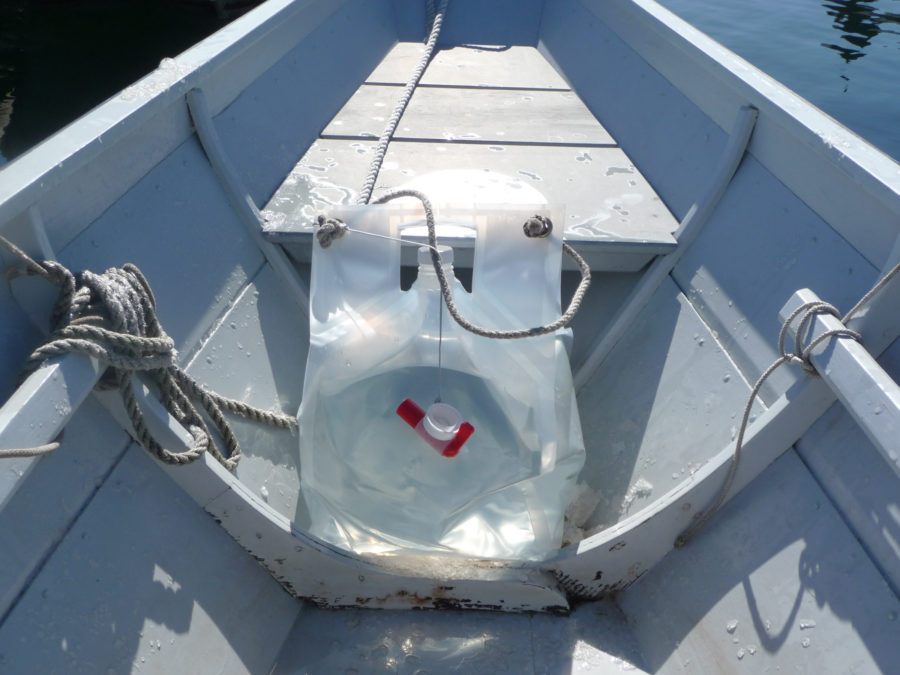
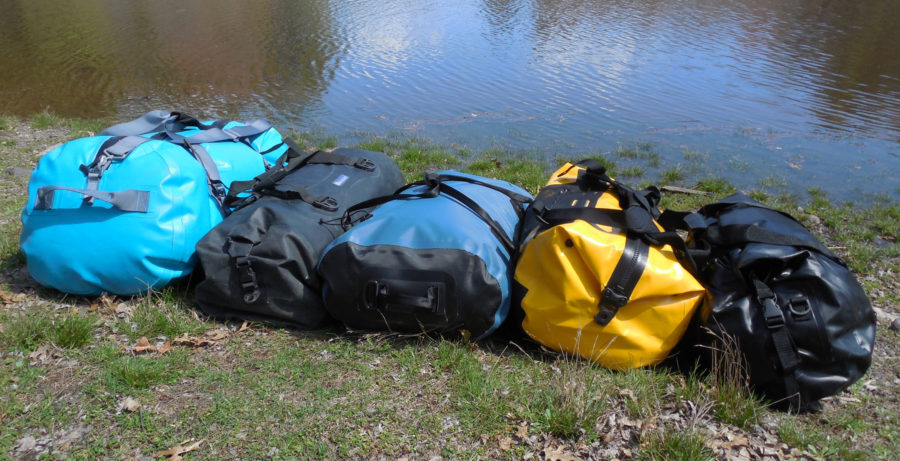
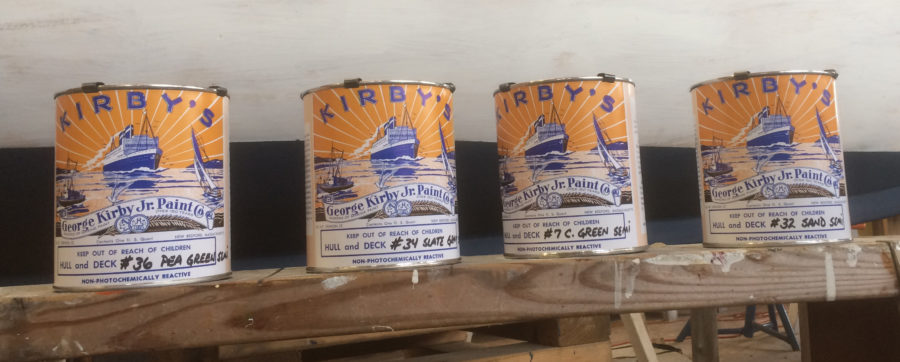
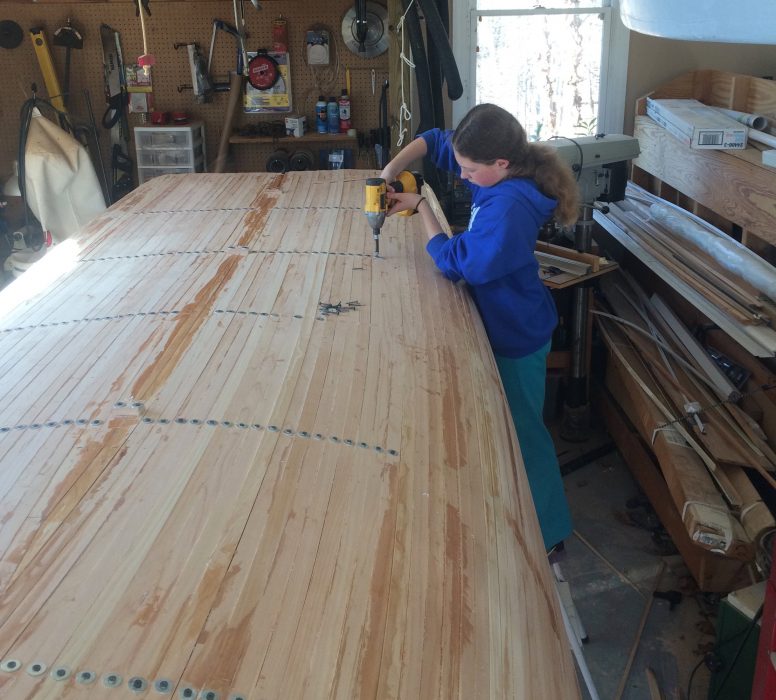

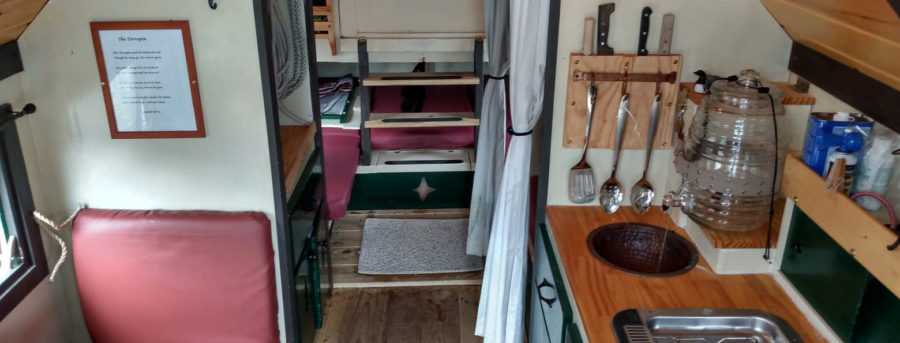
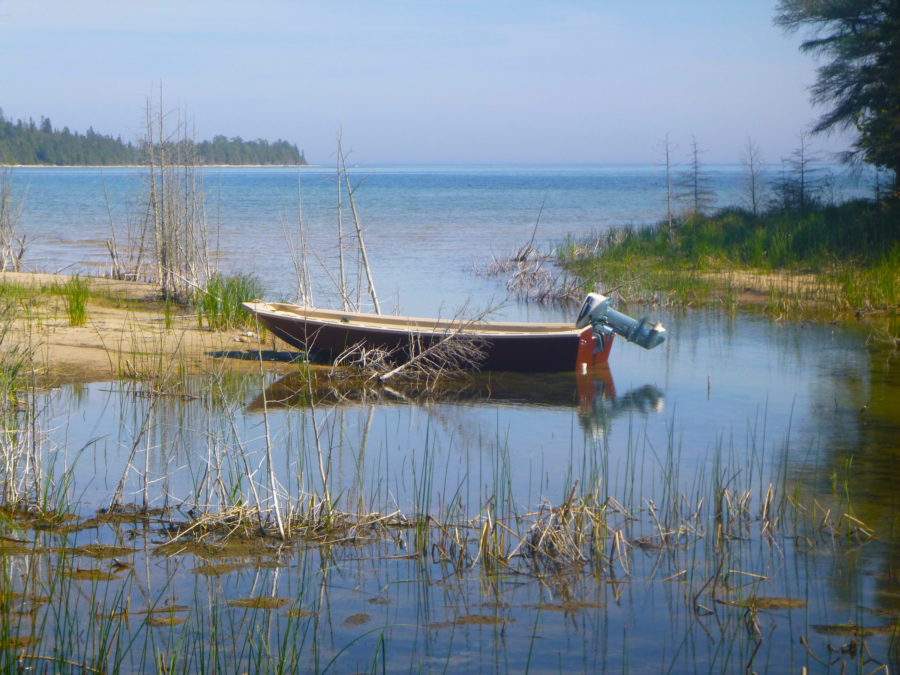
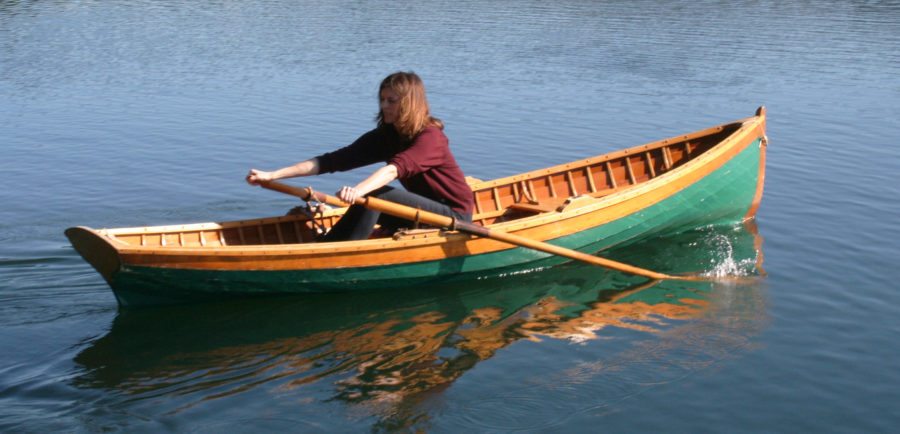
Do you offer plans for this SUP?
Pygmy Boats reports that plans are not available for the All-Rounder SUP.
Christopher Cunningham
Editor, Small Boats Monthly